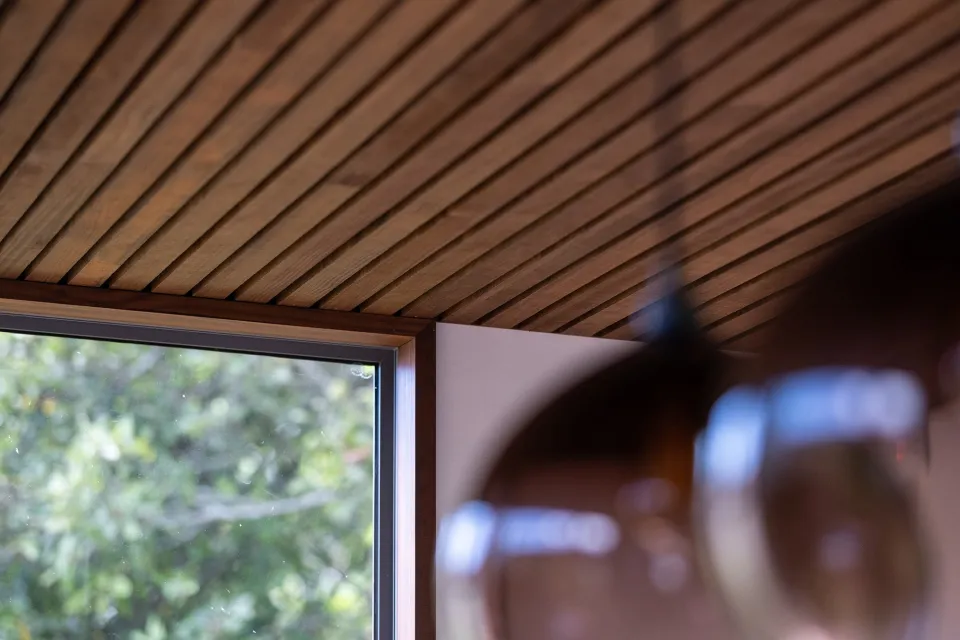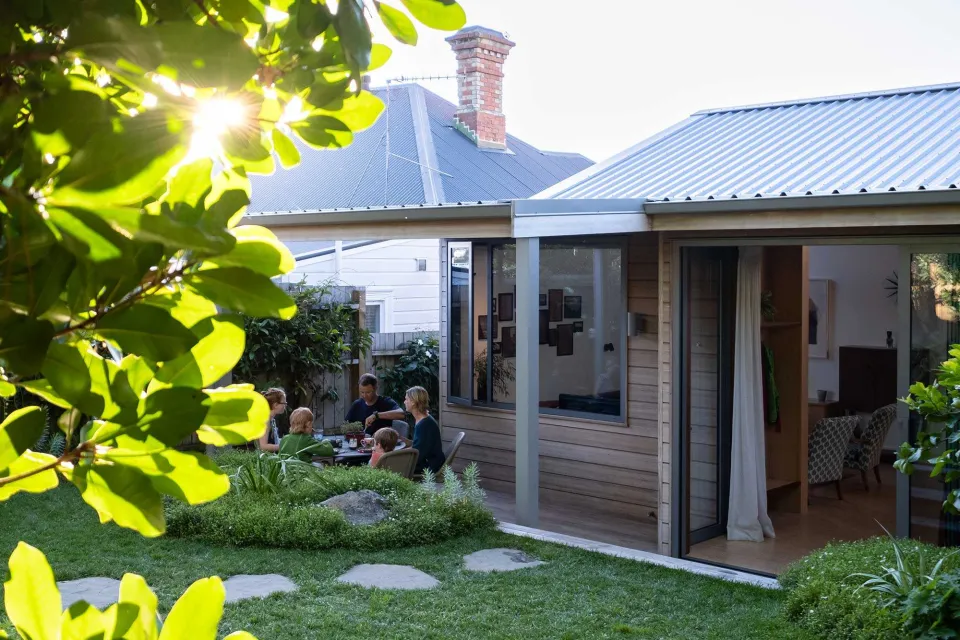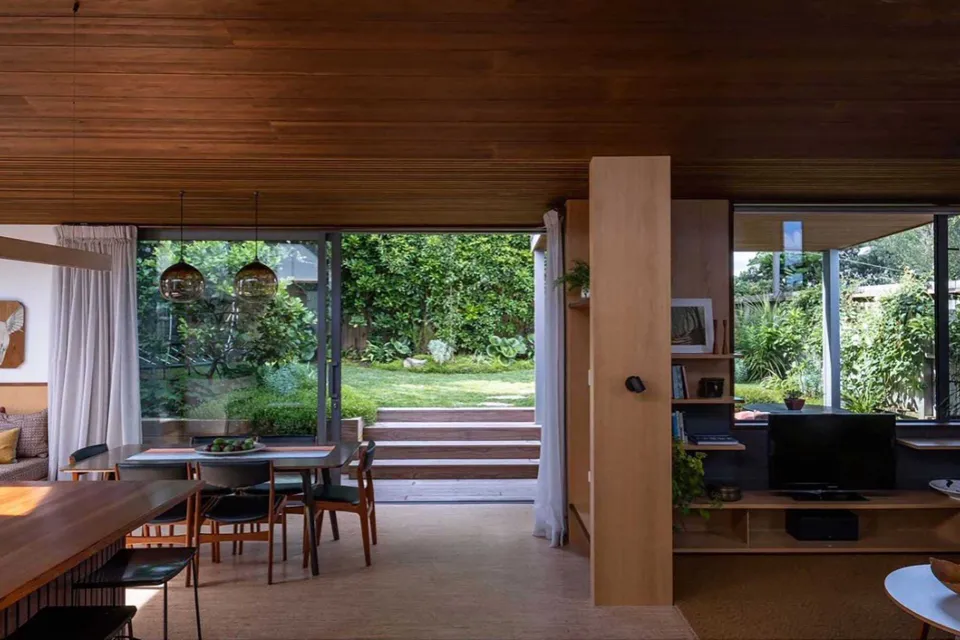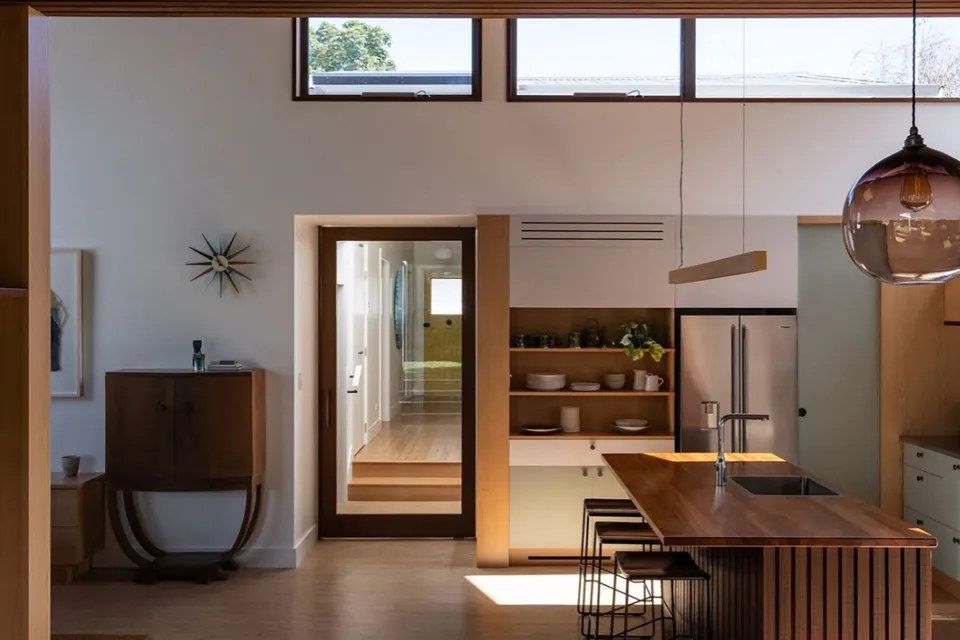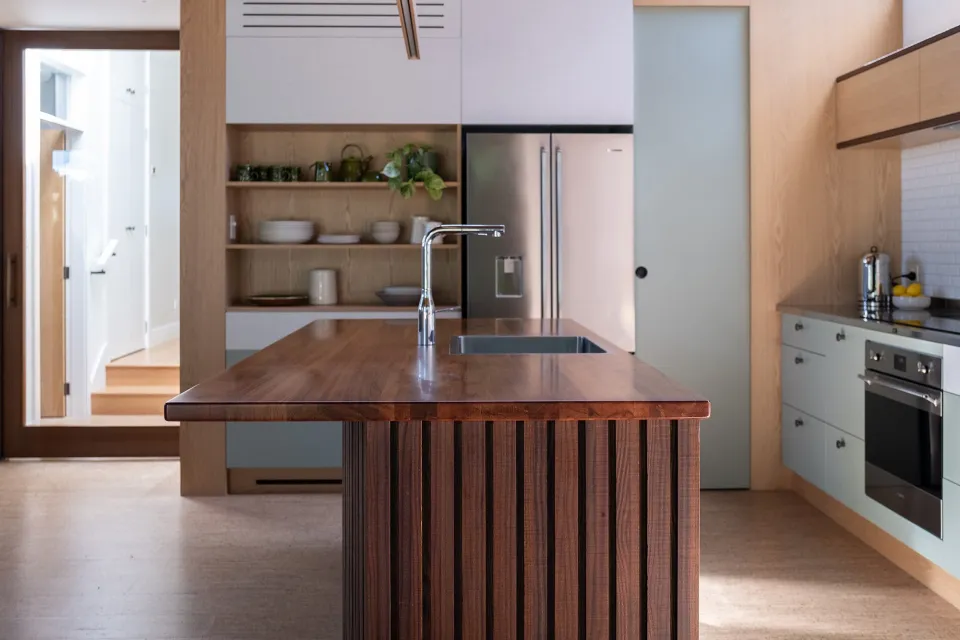-
About
-
Products
- By Timber Product
- Cladding
- Decking
- Screening
- Panelling
- View all
- By Application
- Exterior Cladding / Siding
- Exterior Rain Screen
- Interior Walls & Ceilings
- Soffits
- Screening, Fins & Battens
- Windows, Doors & Joinery
- Posts & Beams
- Accessories
- Coatings
- Fixings
- Samples
-
Resources
- Projects
- Contact
Enhancing Renovation Projects with Timber
Cohesive with many design styles and eras, timber is increasingly becoming the chosen material for renovation projects.
Whether it’s a full-scale restoration project like this 100 year old bungalow in Mt Eden, or an external facelift like that given to this retreat in Lake Rotoiti, timber is a smart solution for renovations.
With such a wide range of colours, finishes and granular textures, timber is a true all-rounder that can be used to enhance traditional style homes as well as to bring a warm look into a monochromatic or minimalist material palette. While trends in recent decades have included industrial looks that favour steel and concrete, in recent years there has been a return to the rich, natural tones of wood - for reasons that span from health and wellbeing to environmental sustainability.
Timber and Wellbeing
The feeling of warmth that many report sensing in a timber lined space has been proven to be better for our health, with research showing that timber interiors lower stress levels and boost mood. This comes from the look, touch and smell of timber, which trigger a natural response similar to that felt after a walk in the forest.
Based on studies undertaken in schools, timber has been proven to extend focus and increase creativity and productivity. Timber linings can also have the benefit of reducing the amount of Volatile Organic Compounds present in a space, which is especially beneficial for those who suffer from asthma and allergies.
Timelessness and Ease of Use
While trends in interior design and architecture can be short lived, timber has a timeless look that can be easily integrated with changing styles. Pale timbers tones can be used to brighten a space, while darker, richer wood can give a more moody and traditional look. Many designers have seen the benefit of adding timber to ceilings, bringing the warmth of wood overhead. This particularly works well with lofty ceiling heights.
Sustainability
Environmental sustainability has recently become a focus for many homeowners and architects. This is another tick for wood, which is renewable, reusable, and has a low carbon footprint. Abodo Vulcan timber has gone further and is proven to store more than twice the carbon emitted during the manufacturing process.
Buying locally made timbers that are derived from Forest Stewardship Council® (FSC®) certified forests is the best way to ensure your weatherboards or cabinetry have a minimal impact on the environment. All Abodo timber is sourced from FSC® certified forests grown here in New Zealand, which are fast growing and renewable.
Longevity
If sustainability is the aim, it is important to ensure any changes made to our homes will last long into the future. Abodo’s patented vertical grain technology, along with the thermal modification process that our Vulcan products undergo, mean that our timbers have the same level of strength and durability as old growth timbers such as Western Red Cedar. This stability means they won’t warp, crack or buckle, even when faced with harsh weather.
Whether it’s replacing old kitchen cabinetry with richly toned panelling, adding sleekness underfoot with new decking boards, or going for a modern cladding makeover for your home, there are many ways to add the warmth of wood to your renovation project while ensuring your choices are positive ones for the Earth.

